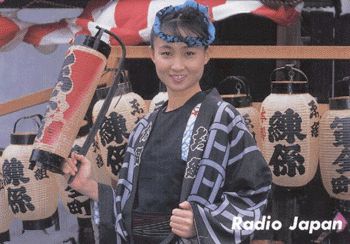Sending a report to a shortwave station is similar to reporting a medium wave station. So if you haven't read the section on Sending Reception Reports to medium wave stations it would be worth a quick read. Reporting to shortwave stations is not much different but with shortwave you can look forward to collecting QSL cards and letters from all over the world. Some stations send program guides, newsletters, booklets, and even travel information.
When you listen to a shortwave broadcast you need to record the frequency, date and time in UTC when the station was heard. As for medium wave stations you need to jot down some details of the program. Look for some of the following items when listening to the program:
- When and how the station identifies itself.
- The name of the program.
- Content of the news or other program
- Names of the announcer(s).
- Items unique to the locality of the station.
How much detail you can record often depends on reception conditions and the nature of the program. But the more detail the better. Also include an indication of how well the signal was received. Shortwave reports use the SINPO code which is described as follows.
- Signal. Refers to the strength of the signal received.
- Interference. Indicates whether other stations were interfering with the signal.
- Noise. Identifies the presence of atmospheric or other noise on the frequency.
- Propagation. Refers to the fading characteristics of the signal.
- Overall. Tells the station how well you received their signal.
For each code use the digits 5 to 1 meaning 5 - excellent, 4 - good, 3 - fair, 2 - poor, 1 - poor. So if you heard Radio Australia with an excellent signal, but had some fairly strong interference from Russia, no atmospheric noise, and slight propagation you might use the code 53544 to record the quality of your reception.
To find the address of the station you will need one of the references given in the Shortwave Resources section. The following form shows a sample reception report prepared for a program heard from Radio New Zealand International which resulted in the author receiving a QSL card from RNZI.
SWL Reception Report |
|||
| Radio New
Zealand International P.O. Box 2092 Wellington, New Zealand |
|||
| Date(dd/mm/yy): | Time (UTC): | Frequency: | SINPO: |
| 26/8/94 | 1115 | 6100 | 55455 |
| Program Content | |||
| News was
in progress. Reports on the airline crash attributed to pilot suicide, Taiwan, Italy's budget, and other financial news (Hugh Fraser) British news at 1122. Sports at 1125. The main points of the news at 1128. BBC Newsdesk ended at 1129. The mailing address for Radio New Zealand was given. |
|||
Be prompt in sending your report to the shortwave station. International broadcast stations use reception reports, among other means, to judge the quality of their signal. The sooner they receive it the more value it is to them. So waiting weeks or months after the program can be counter productive for you both.
Using an IRC
Some international broadcasters will want you to send postage. But the major broadcasters do not require it. Using a guide such as the World Radio and TV Handbook can help to identify stations that require postage. When necessary, postage can be sent in the form of an International Reply Coupon (IRC) available at all Canada Post outlets.
What to Expect in Return
If you send an accurate and complete report then within a few weeks or months, you can expect to receive a QSL card from the station. Although shortwave stations can be much farther away than domestic medium wave stations they tend to reply promptly.
Finally, for successful shortwave listening and reporting you will want to have at your disposal some additional guides and information. So link to the section Shortwave Resources section for additional sources of information to enhance your shortwave listening.
Text © 1999 Don Cassel VE3BUC
You can e-mail me at ve3buc@rac.ca


